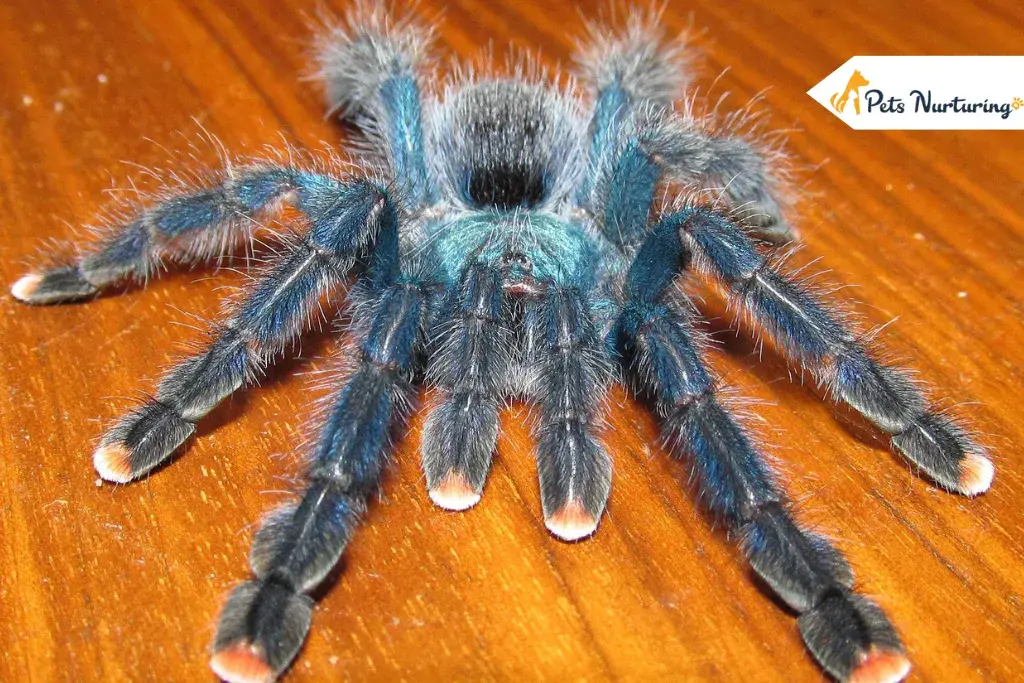
Do you want to own an exotic pet? This sounds so much fun and exciting; however, exotic pets come with a lot of responsibilities.
“Traditional” pets are great, and people love to show these domestic and fashionable pets. Still, few people in this world want something more unique and unusual.
And one of the exotic pets on this planet is the Pink Toe Tarantula!
Found in the rainforest regions of northern South America, this spider is one of the sensational and viral pets on the internet.
Also known as Guyana pink toe, common pinktoe, or South American pinktoe, this spider is a medium-sized, tree-dwelling tarantula. Many people are scared of Tarantulas, but the Pink Toe is one of the calmest, shy, and docile species. So if you’re eager to get a spider, Antilles pinktoe tarantula will be a great choice for an exotic pet.
A spider has a quiet demeanor, minimal space requirements, calm personality, and simple care, making it a great first-time tarantula. They’re also slow-moving creatures which makes it relatively easy to care for the owner.
Pink Toe Tarantulas, sometimes referred to as Antilles tree spiders, have different colors and personalities as compared to other tarantulas. These species got their name from their pinkish-orange toes or pink or orange-colored toes on their furry black legs or brown legs.
So, if you’re interested in getting a pink toe tarantula or just want to know about this spider species, keep reading on!
Today in this blog, we will tell you everything about the pink tarantula. We’ve covered every information you need from Versicolor tarantula habitat and behavior to pink toe tarantula care and pink toe tarantula lifespan.
So, let’s start with the overview of the Antilles pinktoe tarantula.
- Pink Toe Tarantula Overview
- Pink Toe Tarantula : Habitat
- Pink Toe Tarantula : Physical Appearance
- Pink Toe Tarantula : Behavior and Temperament
- Pink Toe Tarantula : Housing
- Pink Toe Tarantula : Diet
- Pink Toe Tarantula : Breeding
- Pink Toe Tarantula : Common Health Problems
- Are Pink Toe Tarantulas Suitable For You?
Pink Toe Tarantula Overview
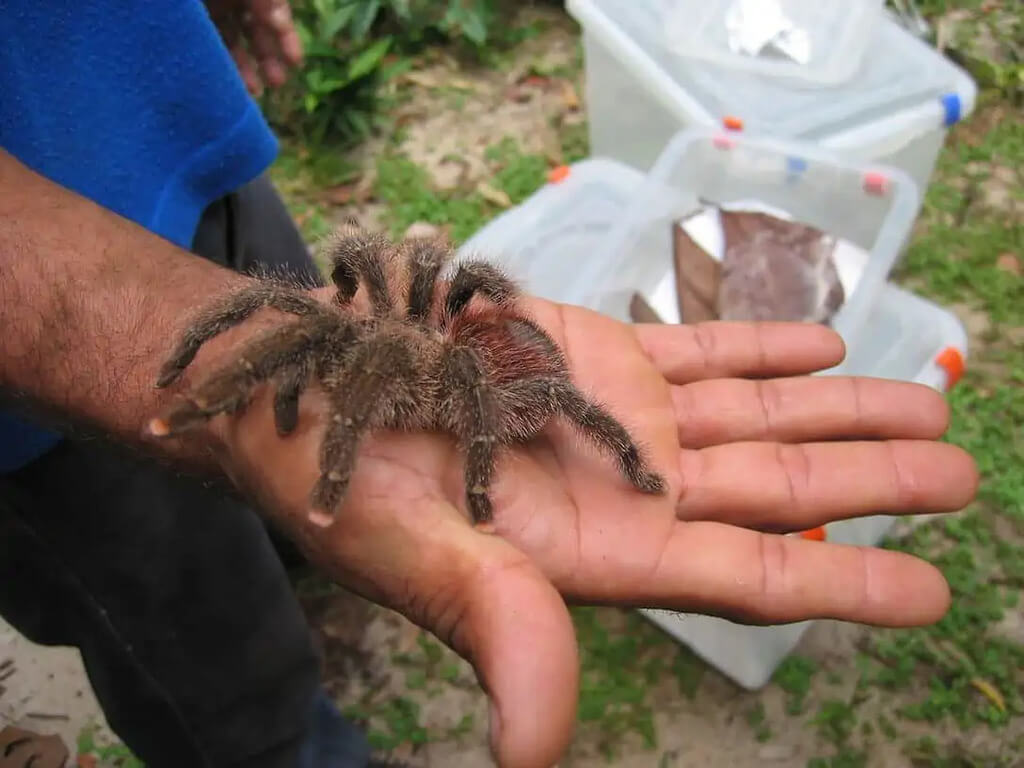
Pink toe tarantula has a quiet demeanor and only requires minimal space for living. It needs a habitat that looks natural from where it comes from. He prefers live prey, but also, he doesn’t mind the dead ones. You can easily find food for this spider, from cricket to mealworms, at pet stores. That’s why this spider is easy to care for, and hence it’s a good exotic pet option. You can literally feel fun and rewarded with all these qualities.
With the cute pink toes, the male tarantula lives for 2 to 3 years, and the female ones can live between 6 and 9 years. You can buy a glass terrarium with vertical structures for this spider. He can climb these vertical structures like climbing tall plants, which these arboreal spiders do in their native habitat.
Most of the time, these spiders like to spend time in a restful state in their enclosure, like the tarantula enclosure. And they only come into action when they’re hungry and going hunting for prey.
Do you want to hold and handle this spider? Just remain calm and gentle! These spiders can sit on your arm or hand if they feel this is a safe place. However, if you make a pink toe tarantula startled, it will quickly jump off your hand or arm and fastly run away.
Now you might be winding, what if your other pets don’t like this spider? Don’t take this spider out when you’re with your pets. Put them in separate rooms to keep both of your pets (spiders and cats or dogs) safe.
What about the pink toe tarantula bite? Yes, these spiders only bite when they feel scared or threatened. However, the reaction is mild, like a bee sting, with symptoms like swelling, skin redness, and pain.
Here’s the basic summary of the pink tarantula:
The Pink Toe Tarantula Overview
Species Name: Avicularia avicularia
Scientific Name: Avicularia Versicolor
Family: Theraphosidae
Kingdom: Animalia
Phylum: Arthropoda
Genus: Avicularia
Common Names: Pink toe tarantula, Antilles tree spider
Size: 3.5 – 5 inches
Temperature: Between 70°F and 75°F
Temperament: Docile
Color Form: Black with green iridescence on the upper body and pink coloring at the end of each leg
Lifestyle: Arboreal (tree-dwelling)
Lifespan: 3-9 years
Diet: Live crickets, mealworms, roaches
Habitat: Rainforests, & Wooded Areas
Care Level: Beginner
Minimum Tank Size: 5 gallon
Tank Set-Up: Terrarium
Now let’s know more about these spooky but cute spiders in detail.
Pink Toe Tarantula : Habitat
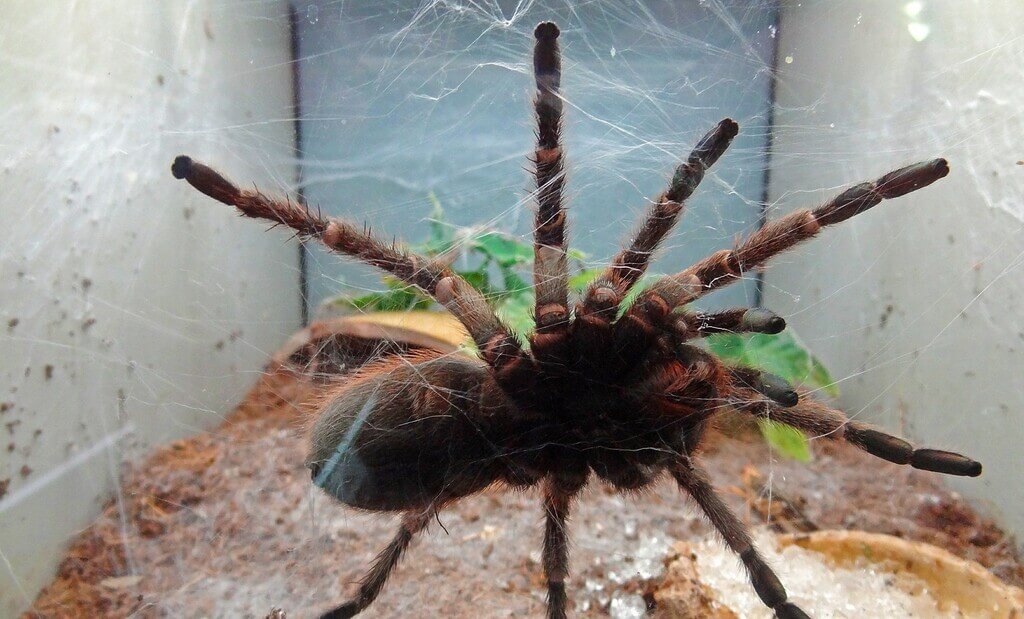
Linnaeus first mentioned Pinktoe Tarantula Avicularia avicularia in 1758. These spiders with pink toes are found in rainforest regions of northern South America, such as northern Brazil, Trinidad, Guyana, French Guiana, Venezuela, and Suriname.
These spiders can be found in the jungles and forests of Brazil in the South and Costa Rica in Central America and on southern Caribbean islands. This is because these specific parts of the country are shaded, humid, and remain very warm throughout the year. These spider species love to spend most of their time resting in the trees and plants.
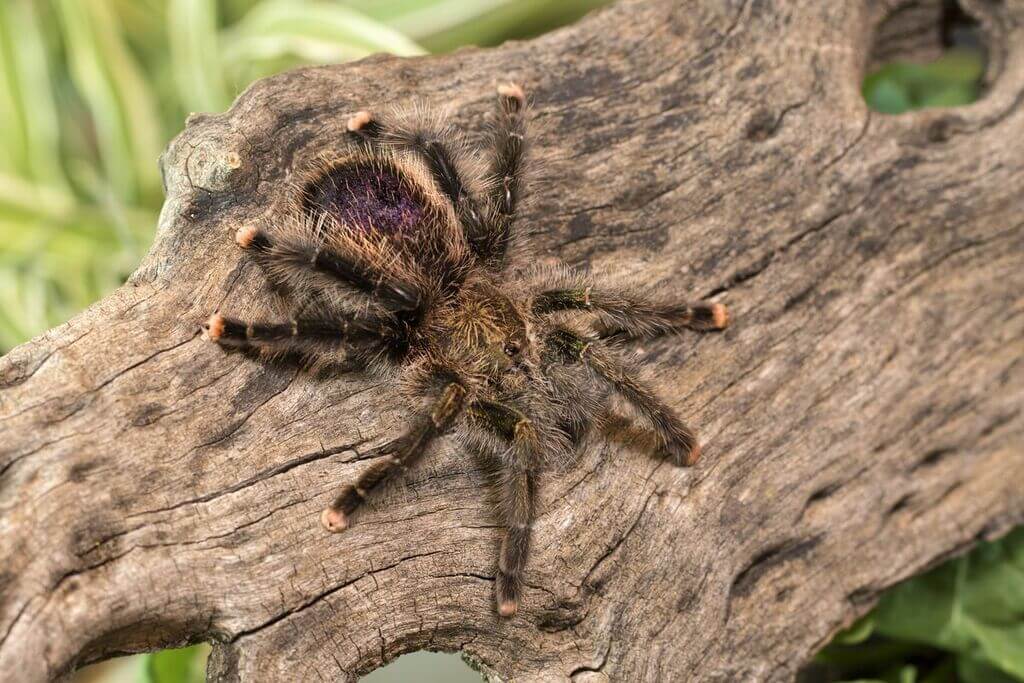
They build their nests in between the debris or clumped branches and in crevices of trees and plants. That’s why they prefer these kinds of habitats. So keep in mind while creating an artificial nest for your pink toe to include lots of vertical climbing and hiding places.
Do you know that the Avicularia genus is the largest group of spiders in America? Yes, it’s true! Only in the United States, there are about 20 species of Avicularia.
Pink Toe Tarantula : Physical Appearance
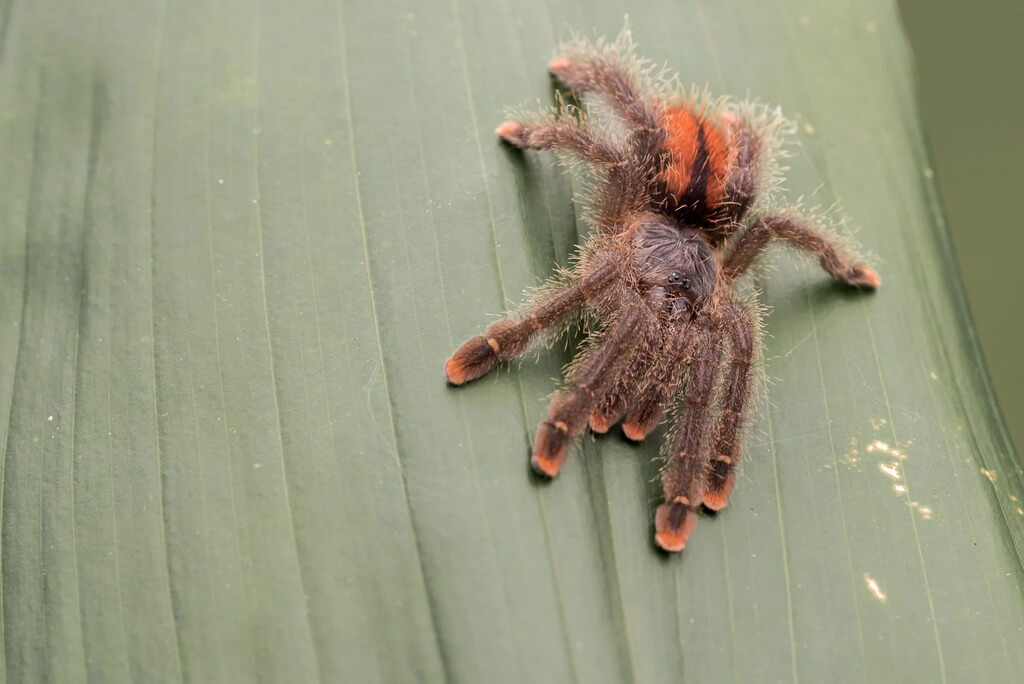
Overall if you see the tarantula is dark black to metallic gray, but along with their famous pink toes, they also have green iridescence on the hard-shell upper body. Some of them also have shiny purple or deep violet, or yellow highlights on their abdominal and leg hairs. These pink coloring at the end of each leg makes them easily recognizable.
Each tarantula has eight legs in total, and other than this, they also have appendages near the mouth known as chelicerae and pedipalps. The first chelicerae contain fangs and venom, and the other ones are used as feelers and claws. Pink Toe Tarantula uses both appendages in feeding.
Size
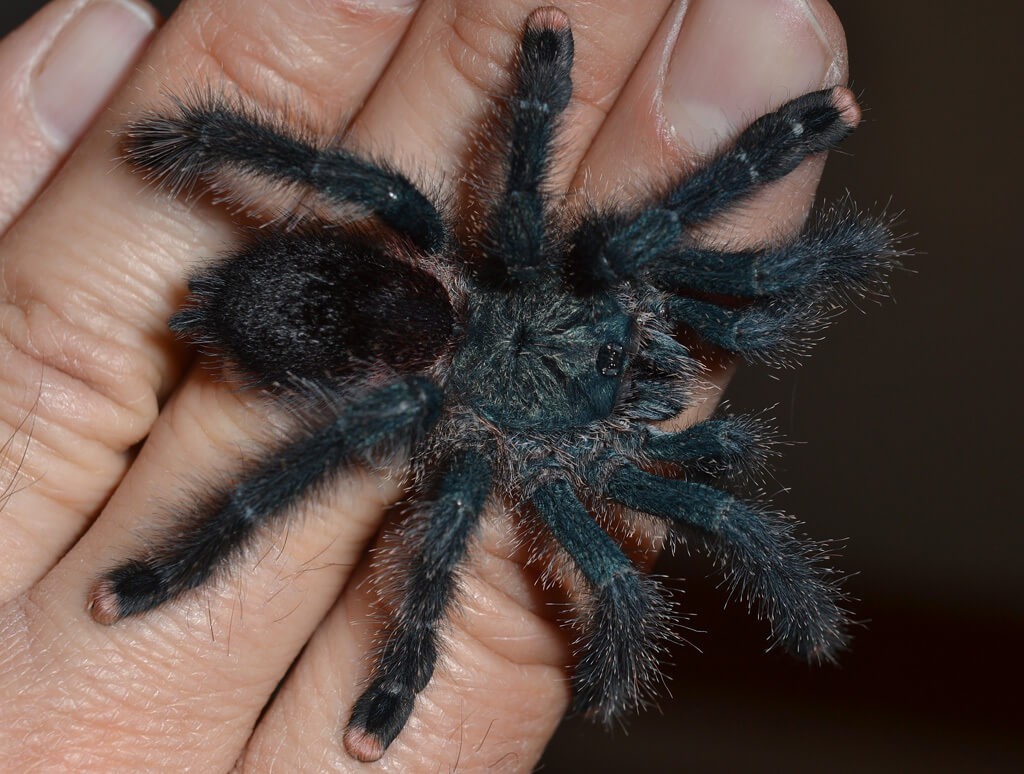
| Female Pinktoe Tarantula | 4.75 inches (11-13 centimeters) |
| Males Pinktoe Tarantula | 3.5 inches (9 centimeters) |
Pink Toe Tarantula : Behavior and Temperament
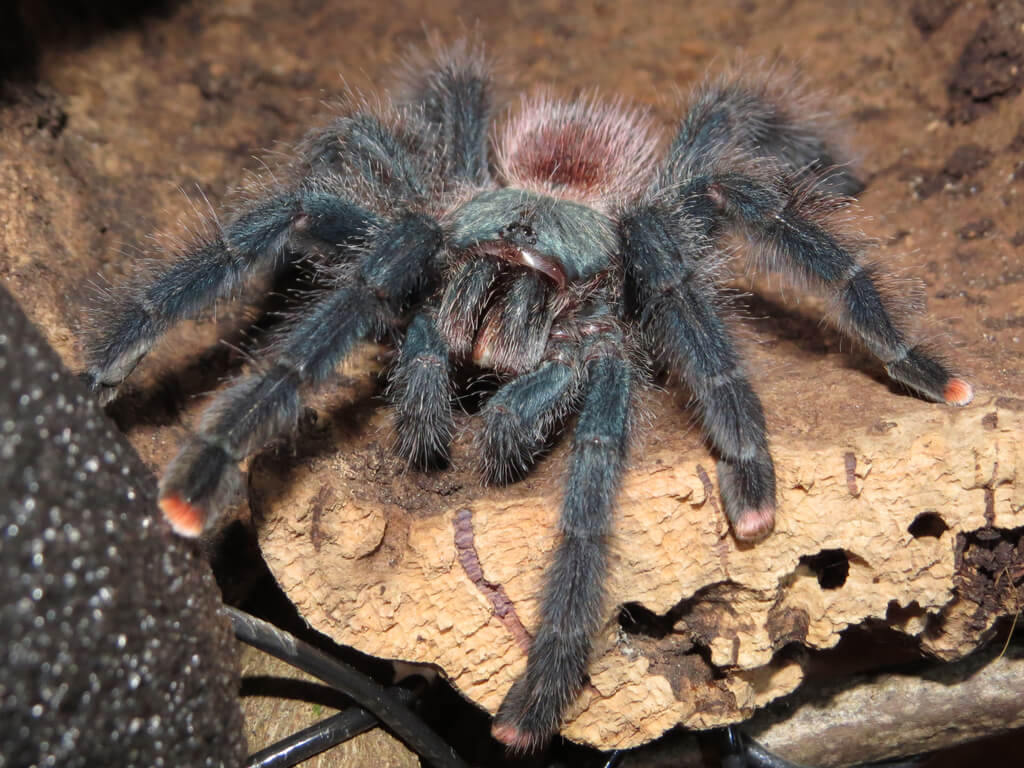
As mentioned earlier, the pink toe tarantulas are calm and docile spiders. Most of the time, these spiders are resting and are often mistaken as slow. But they’re very agile and active when they’re hungry and hunting. So you can say that they’re more active at night than during the day!
Bites are common, but the reaction is mild. These spiders prefer to flee or jump out of any dangerous situation rather than bite. So if you’re allergic to bee stings, you should also stay away and avoid handling these spiders.
Pink Toe Tarantula : Housing
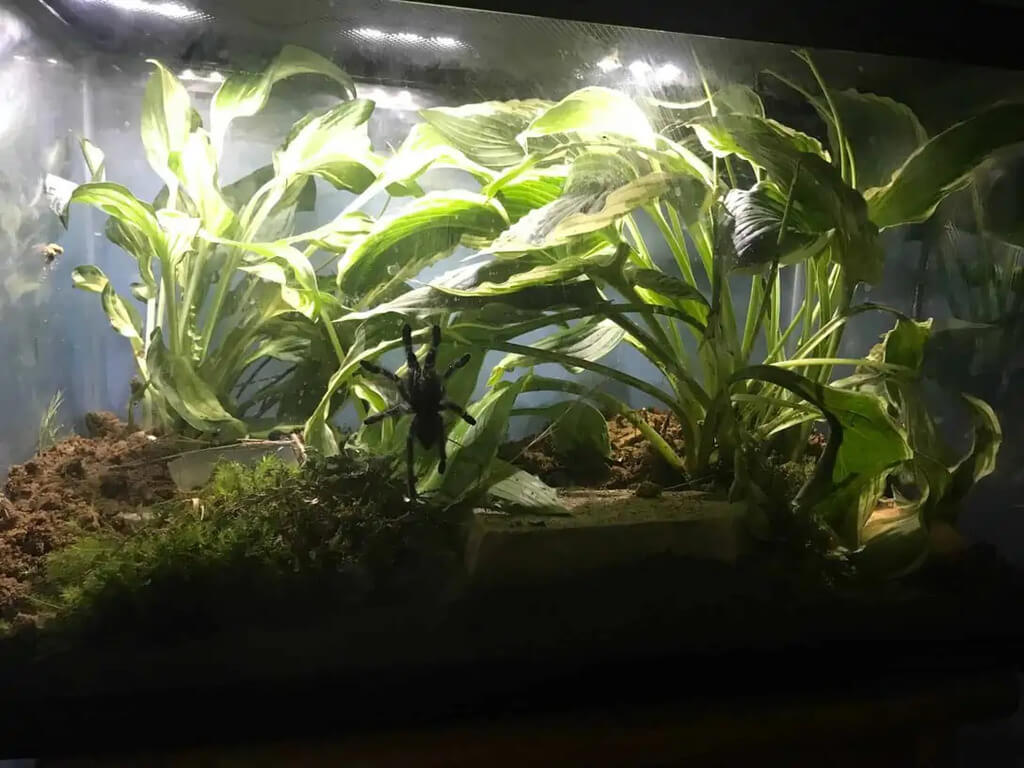
As we already told you that these spiders are primarily arboreal. They usually prefer to live on plants or human structures rather than on the ground. It would be best if you always kept your Pink-toed Tree Spiders in a large enclosure (preferably a vertical enclosure). If you don’t want to buy a new enclosure, you can even modify your old aquarium or use a tall plastic storage tub for these spiders but make them escape-proof.
Use 1.5″ habitats for the young tarantulas, and for large ones, you can go with the dimensions 12″ x12″ x20″. This is the best and most beautiful way to display your pet while keeping them safe. Don’t forget to add 2 to 3 inches of peat moss or soil (free of fertilizers and pesticides) at the bottom and some branches that go up to the top of the terrarium. Add a small water bowl filled with clean water so they can drink whenever they’re thirsty.
Make sure to keep the pink toe tarantula enclosure dry. You can spray the cage with water for perfect humidity every few days.
Pink Toe Tarantula : Diet
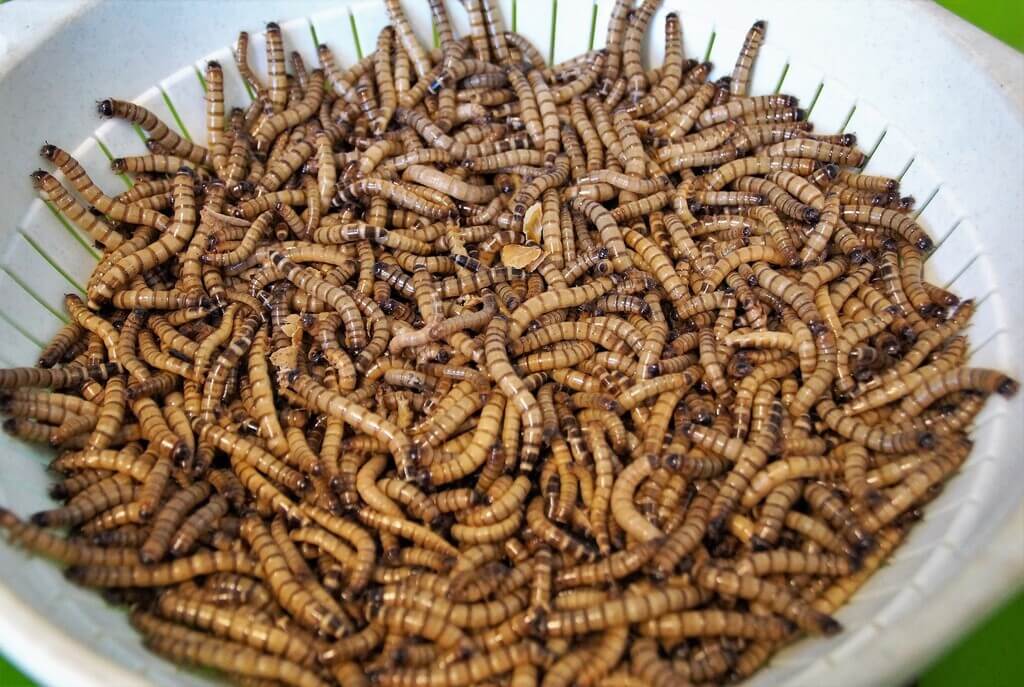
So, what do Pink Toe Tarantulas eat? And what should you feed pink toe tarantulas?
Tarantulas who live in the wild and forest can prey on a variety of things, from other invertebrates to small lizards and frogs; for your tarantula living in captivity, crickets and dubia roaches. These foods are nutritious for their health.
Apart from this, you can also give them live creatures, live grasshoppers, moths, or mealworms. Simply leave the insect in the bottom of the enclosure overnight, and you’ll see that it will be eaten by morning.
Pink Toe Tarantula : Breeding
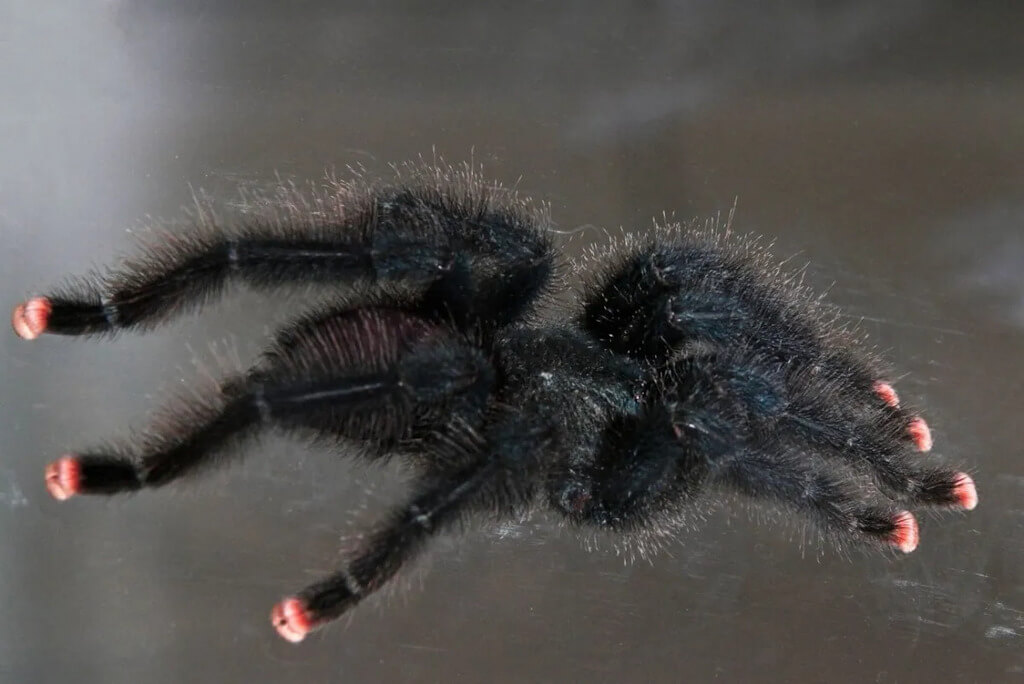
Compared to other spiders, the breeding process is relatively easy for pink toe tarantulas. All you need to do is to put one male and one female tarantula together. Ensure that both are healthy and that the female has molted or shed her skin in the last six months.
Pink Toe Tarantula : Common Health Problems
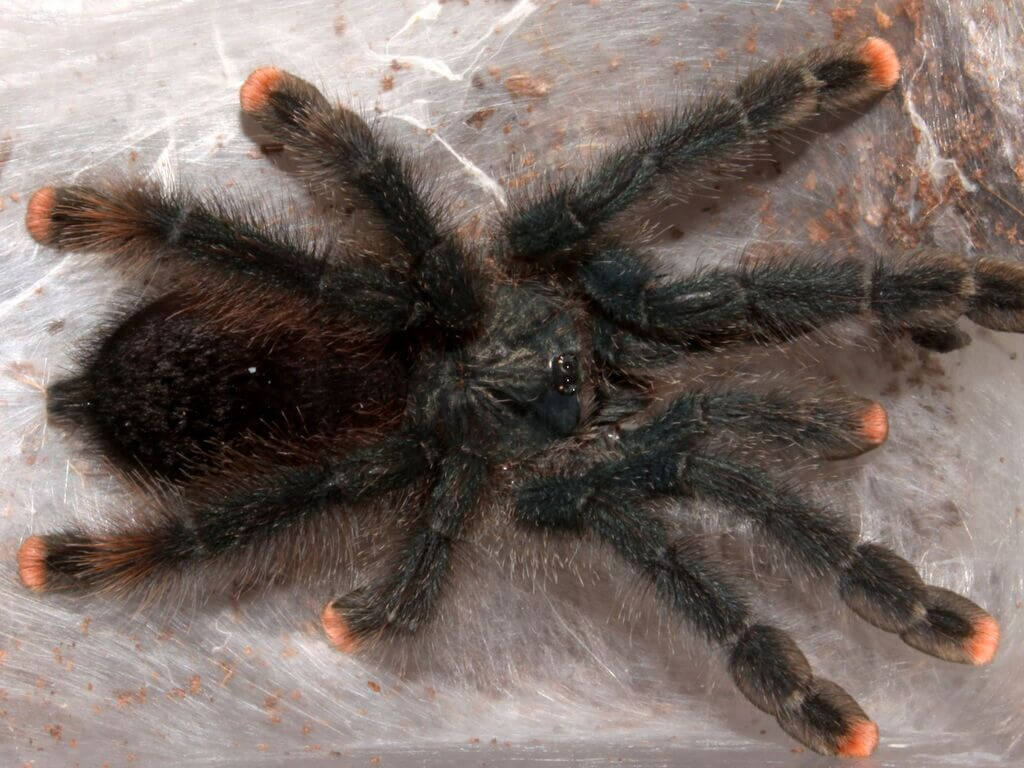
Tarantulas are quite adaptable and don’t face many health problems in captivity. But still, if you notice any behavior changes such as looking overly skinny, losing appetite, pacing the enclosure, and lethargy. These can indicate a health issue, and you should consult a veterinarian immediately.
Other than this, your pet is feeling uncomfortable due to the tarantula molting period. Every tarantula goes through this in which they shed their entire skin, including the respiratory organs, linings of their mouth, stomach, and even sexual organs. Molted tarantulas usually take a day to several weeks to grow new skin and organs.
Are Pink Toe Tarantulas Suitable For You?
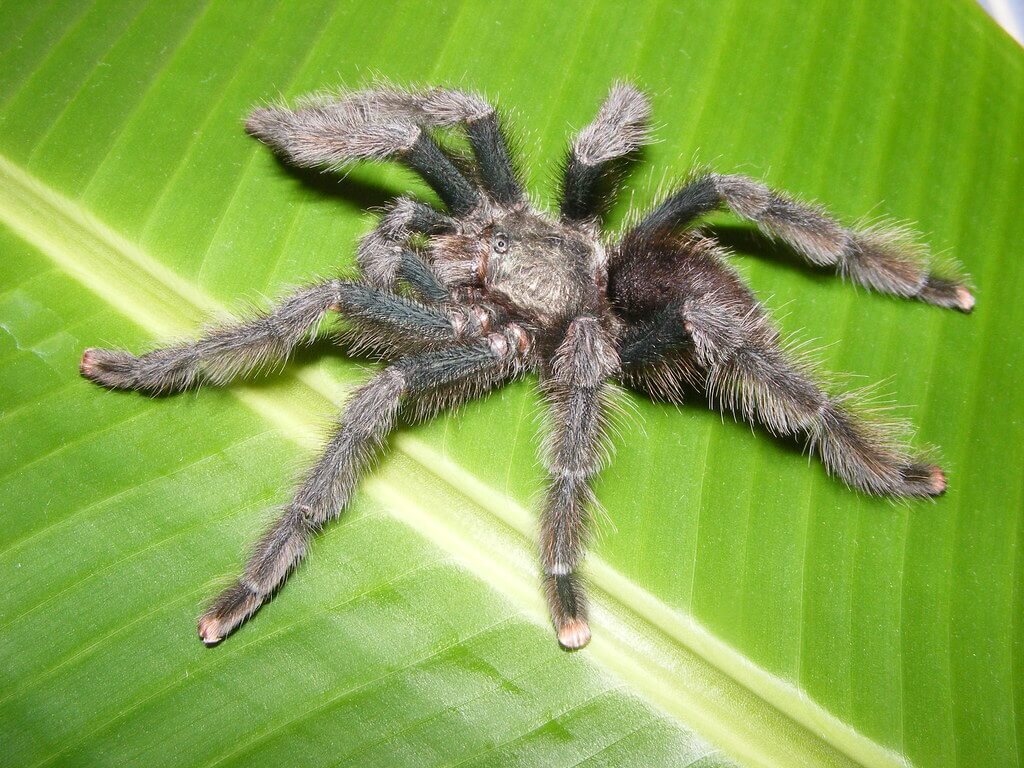
Among all the tarantula species in the world, the pink toe tarantula is considered one of the most beautiful. However, these spiders are always depicted as scary creatures in novels, movies, and TV shows. That’s not true at all!
If you love spiders, the pink toe tarantula will be a great exotic pet for you. It is so fascinating to watch these tarantulas. These pets are friendly, low cost, low in maintenance, and easy to care for, so they also deserve patience and respect.
All you need to do is to give them a natural habitat and regular fresh prey to eat, and that’s it.
So this is all about Pink Toe Tarantulas. I hope this in-depth Antilles pinktoe tarantula care guide gives you all the required information. If you like this guide and find it helpful, share this blog with your friends and family.
For more information:











